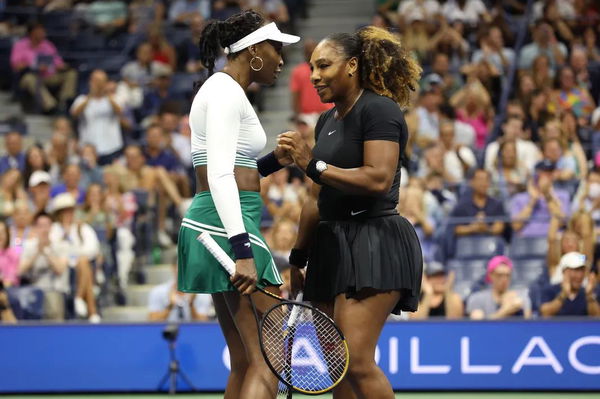

Last year, when Coco Gauff was getting ready to bring the US Open trophy home, fans were out in hoards to support her conquest. The result was truly remarkable. Gauff won her first Grand Slam title, and women’s tennis gained some new fans as 3.4 Mn viewers tuned up on ESPN. The 2024 US Open men’s final between Jannik Sinner and Taylor Fritz averaged 1.67 million viewers, the lowest since 2020. However, this isn’t a recent trend. Thanks to Billie Jean King, Venus, and Serena Williams, who transformed women’s tennis. And Alexis Ohanian had a front-row seat to it.
“More Americans watch the women’s final (the US Open finals) than the men’s,”– remarked Alexis Ohanian during his talks with American sports journalist, Jemele Hill, on November 8th. When the world is trying to make it even for women’s and men’s sports, the US Open opens the counter-narrative to it. However, it took years for this to develop. Things started turning around in 1973 when Billie Jean King indulged in a Battle of the Sexes against Bobby Riggs. She defeated him, and the result was, the US Open became the first Grand Slam to offer equal prize money to the winner since 1973.
Before the Williams sisters, women’s tennis in the US was stagnant. Ohanian, Serena’s husband, offers insights into the factors that led to their dominance. While the organizers were focusing on marketing women’s tennis along with men, after “King forced pay equity,” “generational talent” came along.
ADVERTISEMENT
Article continues below this ad
He said, “Serena and Venus were so great in a space that is so not used to them that folks can’t stop talking about them. Can’t stop looking away. A whole ton of new fans become fans of the sport because of them. And now they have been given, US tennis has been given the greatest gift they could have dreamed of.”

Rightly so, the US tennis received its biggest gift in the form of Williams’s sister, who won the US Open from 1999 to 2002. And another burst came in the form of Serena Williams claiming the title at home again in 2008, and 2012-2014. However, this was just at one major tournament.
The sisters continued their dominance for around 2 decades. Thus, hooking more viewers to the sports, as “Americans love greatness.” As a result, this trend followed even though the Williams sisters are not the force today. “You’ve got more Americans showing up to see the greatness of the women than the greatness of the men,” remarked Ohanian. When it comes to tennis holistically, more needs to be done in women’s tennis.
ADVERTISEMENT
Article continues below this ad
What’s your perspective on:
Why do more Americans tune in for women's tennis finals than men's? Is it the legacy of greatness?
Have an interesting take?
Despite legendary athletes such as Billie Jean King, Venus and Serena Williams, women’s tennis vy for pay parity
The pay parity in all the major tournaments is relatively a recent phenomenon. When Venus Williams won the Wimbledon Championships in 2000, she received a check of $696,858. The men’s winner earned $20,863 more. However, things changed some years later, and all the majors now have equal pay. But the Masters 1000 and -500 tournaments still don’t offer equal pay. The 2024 Cincinnati Open highlighted another stark reality of women’s tennis.
The winners in the men’s and women’s categories witnessed a massive $500k gap in the prize money. The Cincinnati Open champion, Aryna Sabalenka, shared her views on the issue of pay disparity. She said, “We are working really hard. It’s not like we are doing nothing and they [are] paying us the same money. The level is probably different. Of course, [the] men are stronger. Anyway, they’re going to be stronger and better than us, but we’re still putting a lot of work in, and I think we deserve to be paid the same.”
ADVERTISEMENT
Article continues below this ad
However, the WTA has announced that all combined 500- and 1000-level event tournaments would be equal for both men and women by 2027. But, when timings are taken into account, since 1973, even after 50 years, women’s tennis is fighting an old battle.
ADVERTISEMENT
ADVERTISEMENT
ADVERTISEMENT
ADVERTISEMENT


Why do more Americans tune in for women's tennis finals than men's? Is it the legacy of greatness?